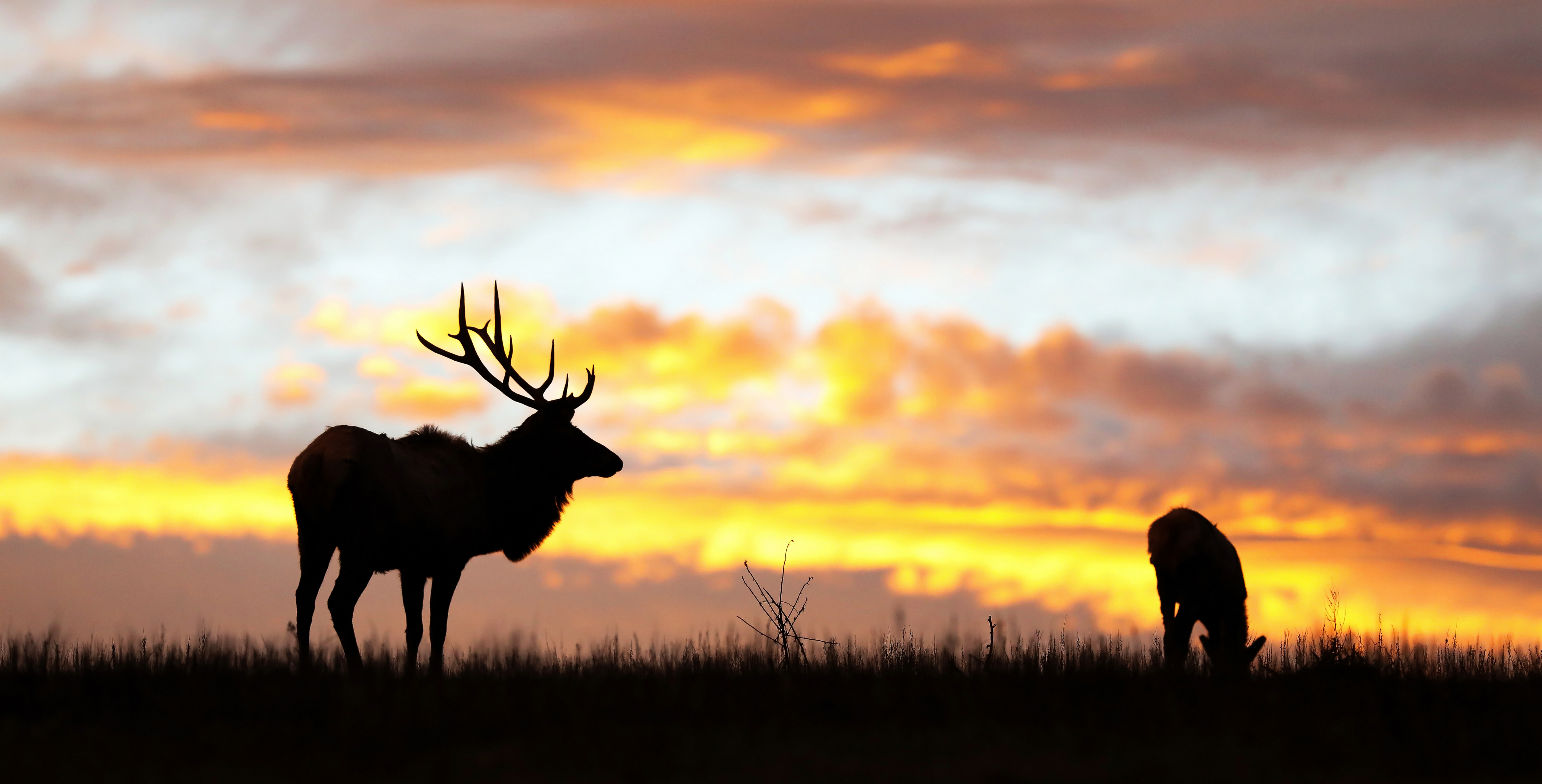Elk Migration in the Greater Yellowstone Area

Elk migration is a vital part of the Montana ecosystem and habitat for wildlife. Elk are herbivores, meaning they eat plants. Because of them having this type of diet, they are required to migrate to areas in which they can feed. According to National Geographic (2018), “elk migrate to high mountain grazing grounds where the cows (females) will give birth. Each cow typically has a single calf.” Subsequently, in the winter “elk reconvene into larger herds, though males and females typically remain separate. The herds return to lower valley pastures where elk spend the season pawning through snow to browse on grass or settling for shrubs that stand clear of the snow cover.”
In the documentary by National Geographic Take an Epic Journey with the Elk of Yellowstone, the migration researchers and Elk guide went on an expedition in the late spring Southeast of Yellowstone. These researchers will capture the elk throughout the winter and place tracking collars on them to help them conduct research and locations during the year. Furthermore, these researchers interact with the elk populations year-round (National Geographic, 2017). This research consisting of tagging elk is not a new phenomenon. According to Arthur R. Brazda (1953), there was a program of tagging elk calves in the Gallatin Drainage in Montana dating back to 1949. These calves were classified via plastic markers to gather research on migration-related studies.
Migration is what makes wildlife wild (National Geographic, 2017). It is a concept that not all mammals follow regularly, but that is necessary for survival. There are 9 elk migrations in the greater Yellowstone area, making up a total of 20,000 elk within the area. This area spans over 5 times bigger than Yellowstone National Park, meaning that the national park is dependent upon these elk and the area they migrate in and around (National Geographic, 2017). As you can see, this species is crucial to the livelihood of Montana’s wildlife. Through their migratory patterns, they can sustain the environment.
References
Brazda, A. R. (1953). Elk Migration Patterns, and Some of the Factors Affecting Movements in the Gallatin River Drainage, Montana. The Journal of Wildlife Management,17(1), 9. doi:10.2307/3796798
National Geographic (Publisher). (2018, September 21). Elk. Retrieved from https://www.nationalgeographic.com/animals/mammals/e/elk/
National Geographic (Producer). (2017, March 18). Take an Epic Journey with the Elk of Yellowstone[Video file]. Retrieved from https://wwwyoutube.com/watch?v=rS3P9gl7CUU
Contributed by Brandon Rasor



